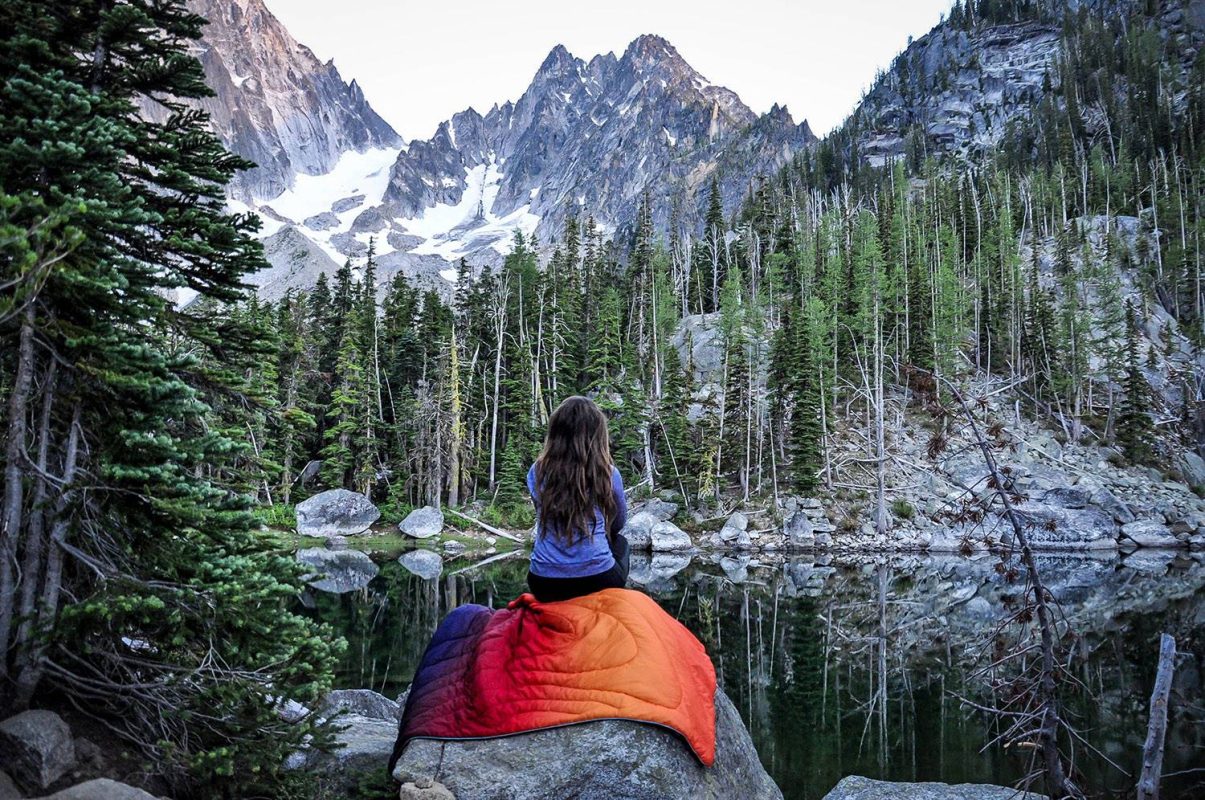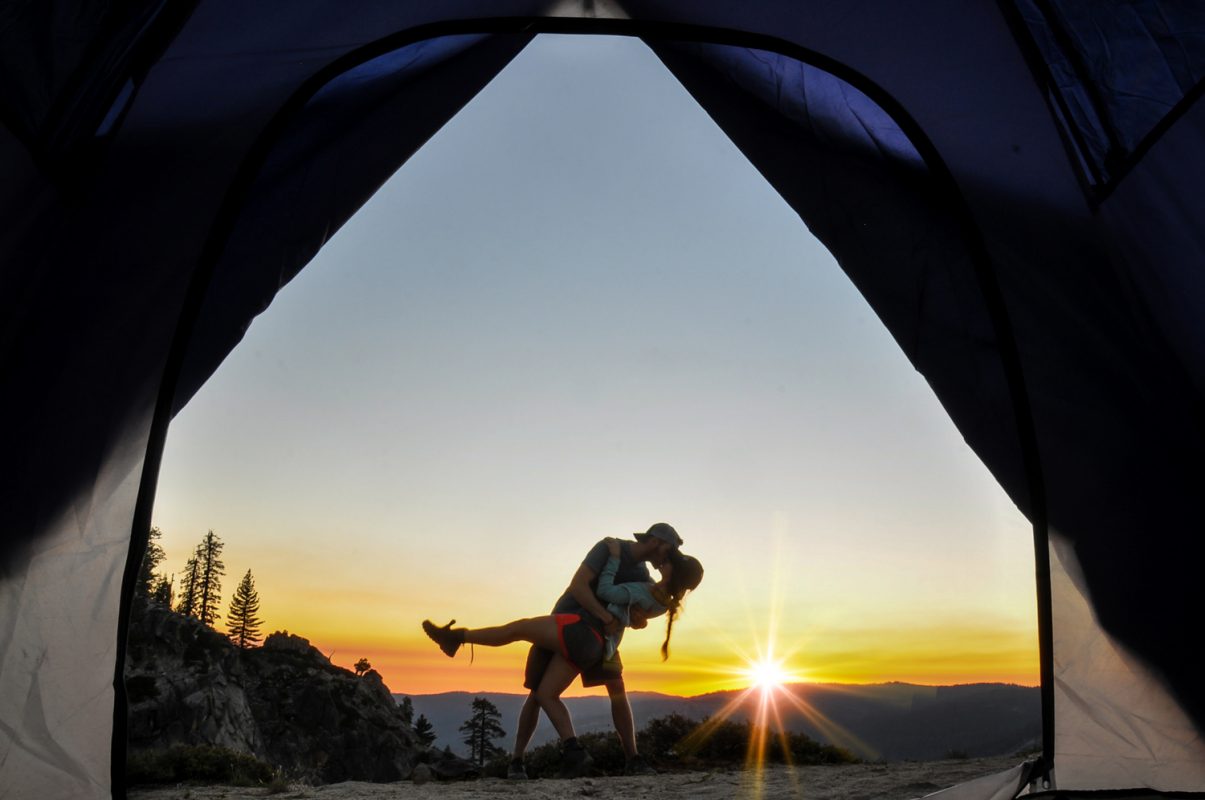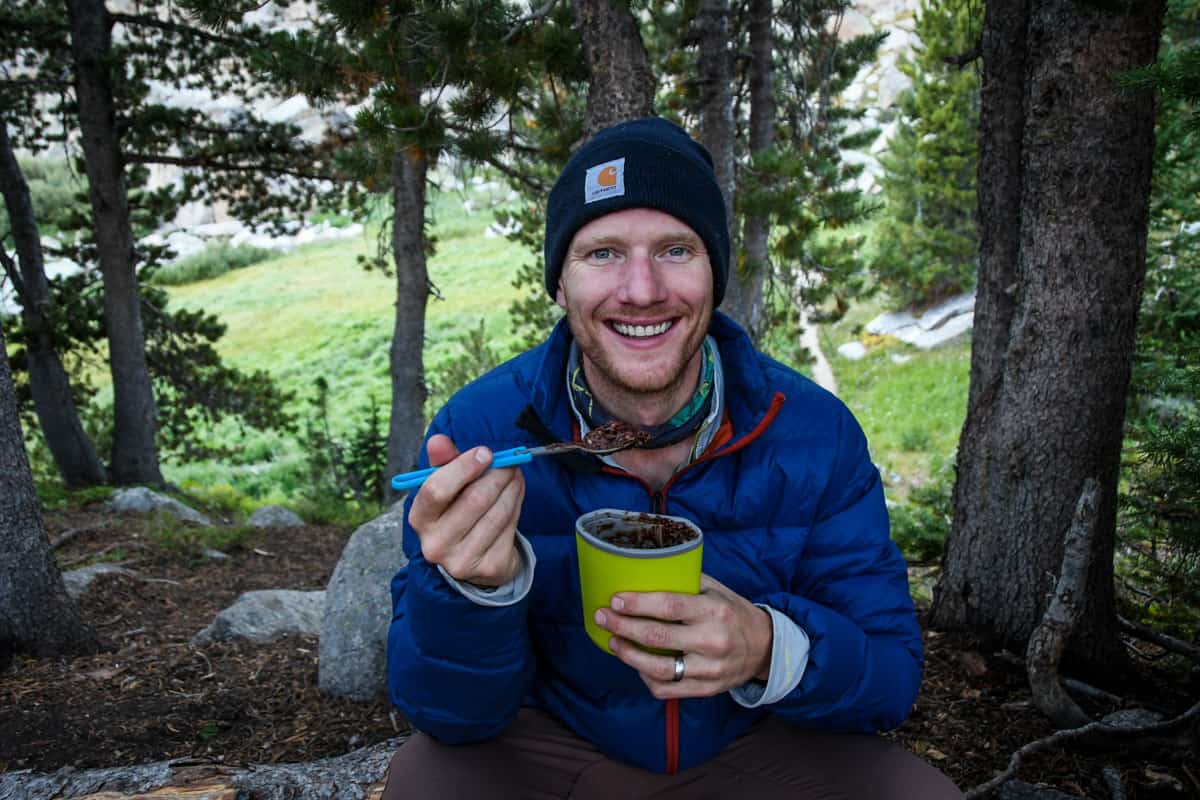In this guide we’ll go over the basics of backpacking for beginners, including how to get started, what to pack, and of course answering the frequently asked question: What is backpacking?
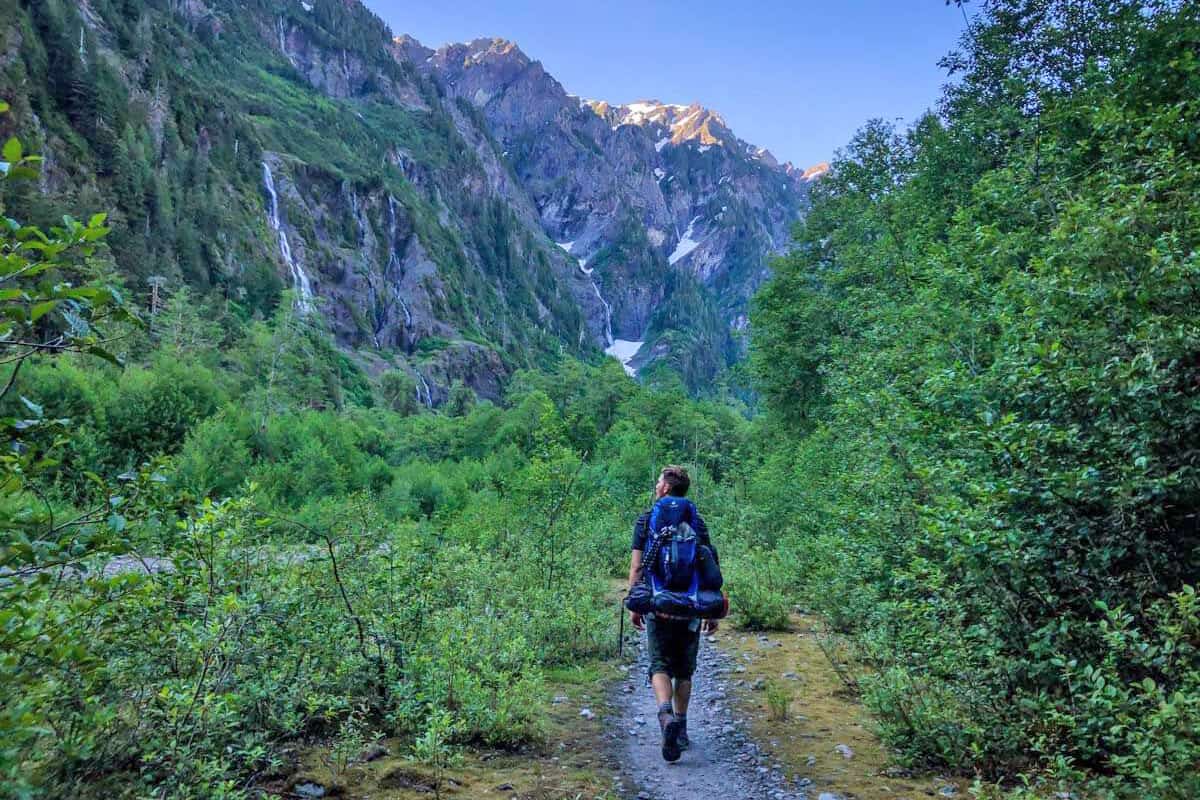
You may have heard the words backpacking and backcountry thrown around in talks with outdoor enthusiasts. You’ve heard your friends talk about that incredible backpacking trip they did last summer, or you’ve read about our backcountry adventures in Olympic National Park.
Backcountry: The elusive place with the most epic wilderness, wildlife spotting, surreal views… you get the idea. Backcountry means off-the-grid, right? Remote. Undeveloped. And hard to get to.
So you may be wondering… What exactly is backpacking?
Don’t worry, we’ll get there!
Below we’ll get into the basics of backpacking for beginners, including answering the frequently asked question: What is backcountry camping?
But first…
Backpacking guide
- What is backpacking
- What is backcountry camping
- What to expect when backpacking
- Backcountry basics
- What to pack for the backcountry
- Best gear for backpacking

Here are some of our most recommended backcountry guides
If you’re looking for more of our backpacking guides, you can click below to go to that resource page.

And now to answer your biggest question…
What is backpacking?
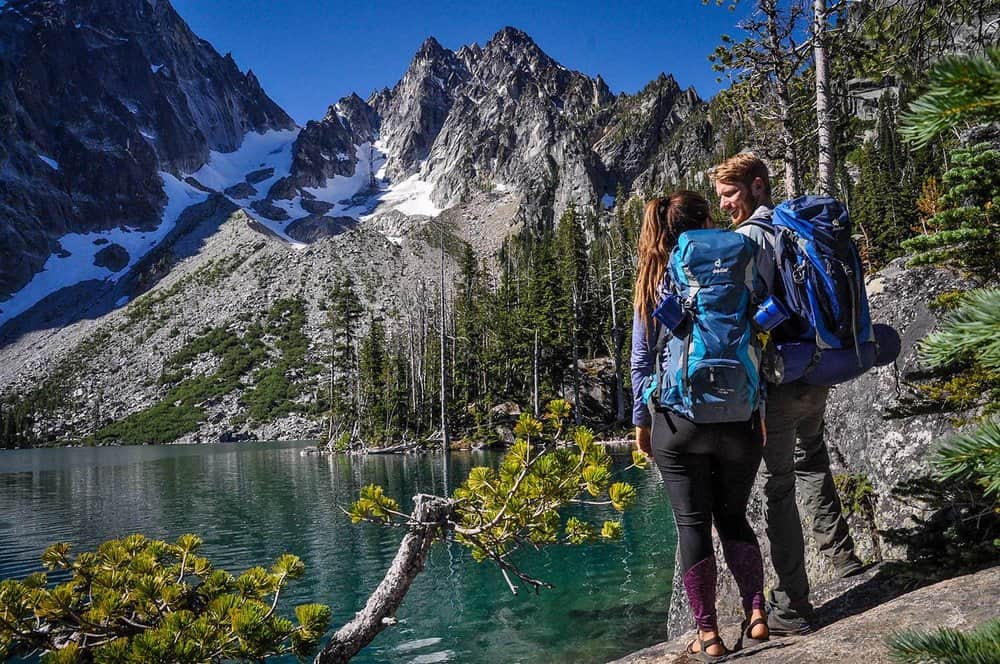
Backpacking is an outdoor adventure that combines hiking with camping and usually takes place in remote areas known as the backcountry.
The name comes from the idea that you have to carry all of your equipment and gear on your back. Unlike with day hikes, when backpacking you’ll have a much larger pack to accommodate your tent, food, water and other supplies for an overnight (sometimes multi-night) stay in the wilderness.
Backpacking goes hand-in-hand with backcountry camping. In fact, the two are oftentimes used interchangeably.
Which brings us to the next question…
What is backcountry camping?

Backcountry camping is spending the night in the remote wilderness carrying in all your own gear on foot. To get the full outdoor experience and immerse oneself in nature, backcountry camping is the best way to go.
Backcountry campsites are set up in remote areas of the backcountry, but lack the conveniences and amenities like running water, restrooms and RV hookups.
What can you expect at a backcountry campsite?
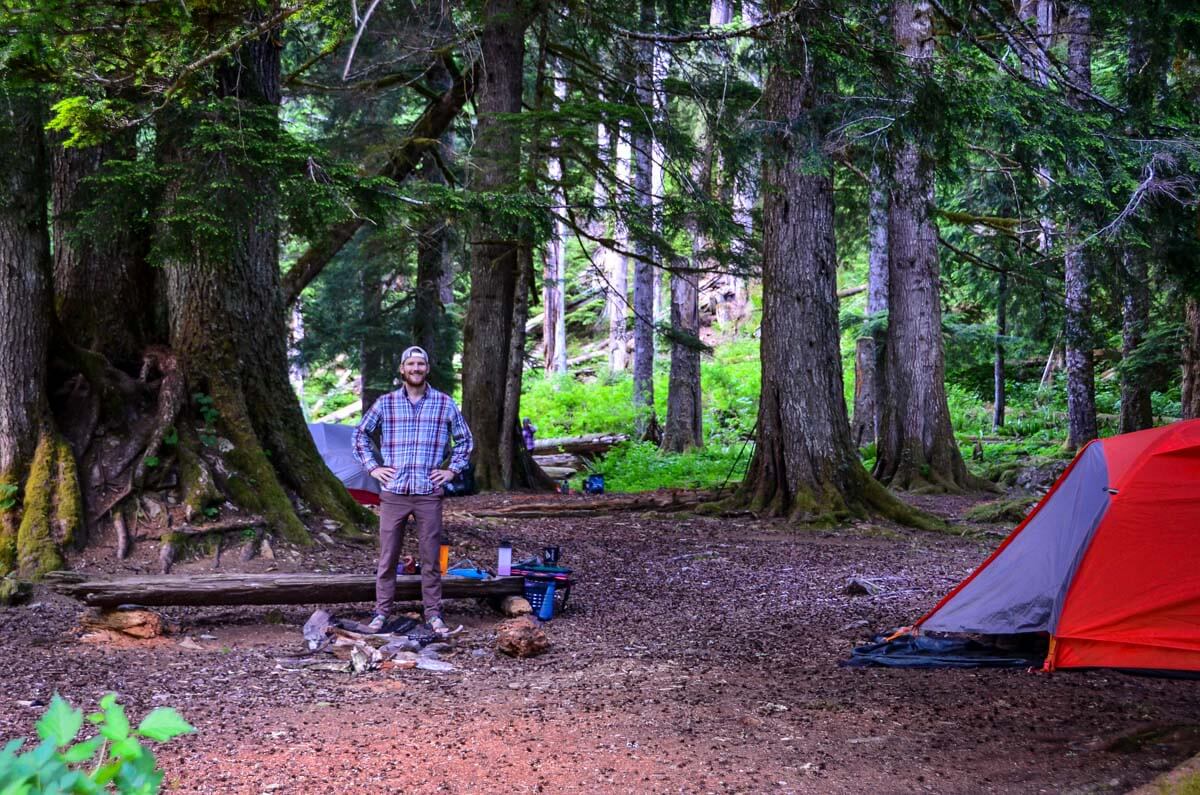
It depends, but generally, you can expect some or all of the following:
- Tent pad
- Logs to sit on
- Fire pit (depending on location)
- Privy (rustic drop toilet)
- Food storage options (in bear country)
When backcountry camping at a designated campsite, you’ll typically find a tent pad, or flat clear spot to set up your tent. If you’re lucky, there might be some logs set up to sit on and perhaps a rustic fire pit. (If you’re camping at high elevation or in areas susceptible to wildfire, you won’t find the latter.)
Many designated backcountry campgrounds also have a primitive outhouse called a privy. This is for all campers in the area to share, and depending on where your site is located in relation to the toilet, it may or may not be very convenient.
Lastly, if you’re camping in bear country, there will likely be some sort of food storage option. This may be a bear pole, from which you can hang your food pack.
Insider Tip: Check with the closest ranger station to see if there are places to hang your food along the trail. If not, you’ll want to carry a bear canister.
Dispersed Camping
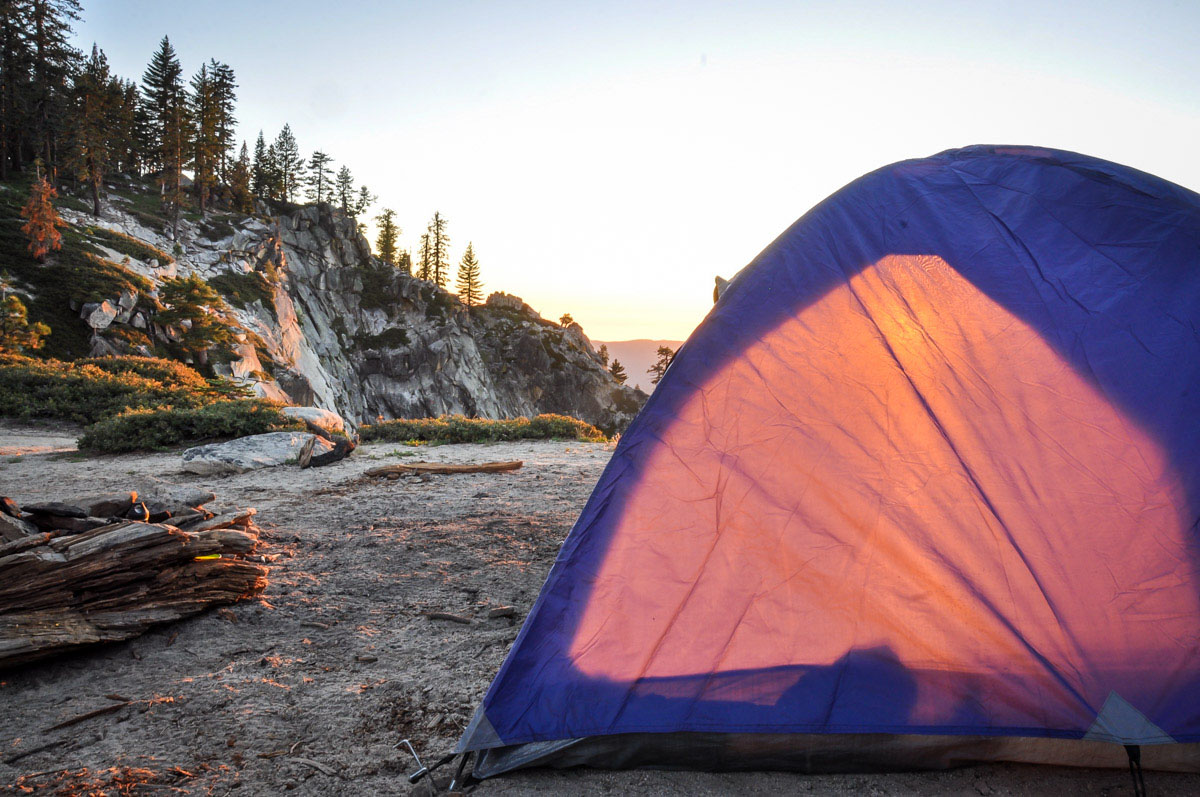
Another type of backcountry camping is known as dispersed camping. This term refers to the practice of setting up your tent in a completely “wild” and unestablished area that has not been reserved for camping.
Some National and State parks and forests allow for dispersed camping, but it is often only permitted in limited areas. It’s best to check the local backcountry camping rules beforehand.
What to expect when backpacking
When it comes to backpacking for beginners, here are a few things you can expect when out on the trail.
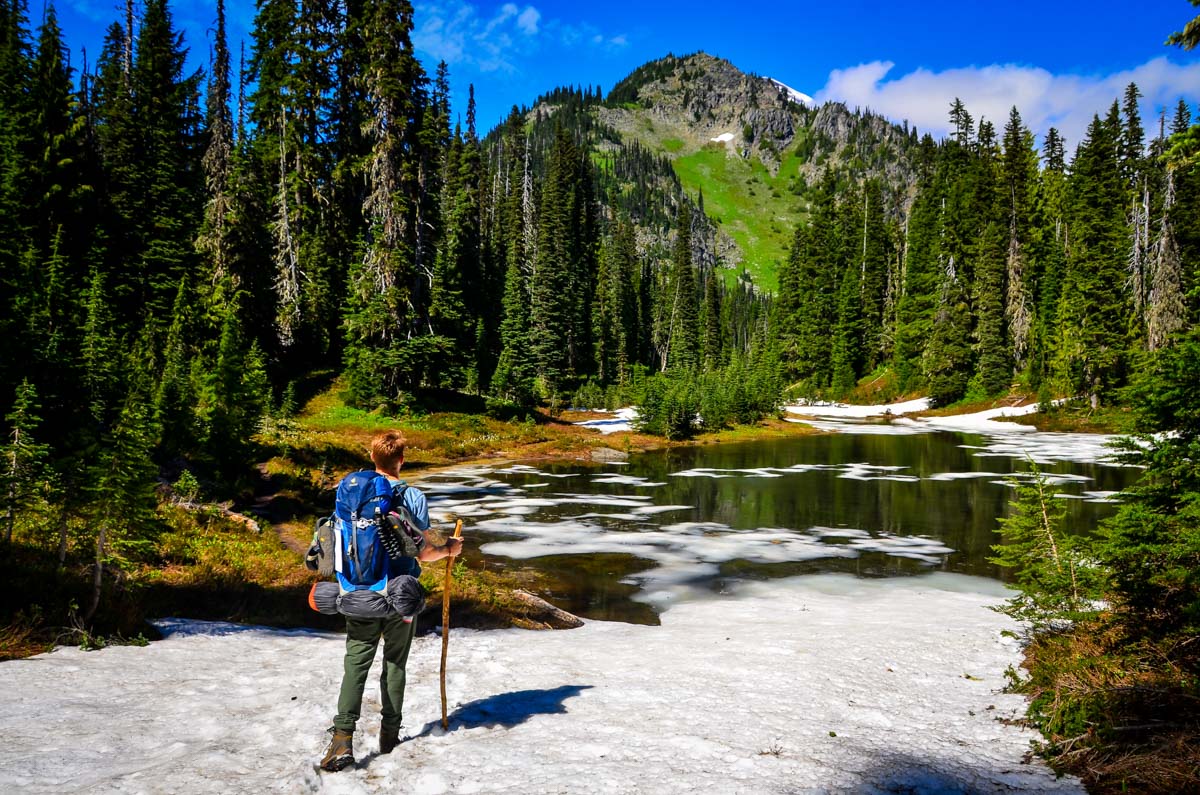
More planning & more work
When backpacking in the backcountry, you’ll need to hike in and hike out with all of your gear. Unlike with car camping where you can drive all your gear up to your site, this means you’ll need to carry your own shelter (tent), sleeping gear, water supply, food and any other gear you may have.
You should also be prepared for unexpected situations with basic first aid, off-line navigation, a water purification system and bear canister to safely store your food (if you’re camping in bear country).
Backcountry camping certainly requires a bit more planning and preparation than your typical car camping scenario. We’ll go over all the necessary gear in the backcountry essentials section below.
Permits may be required
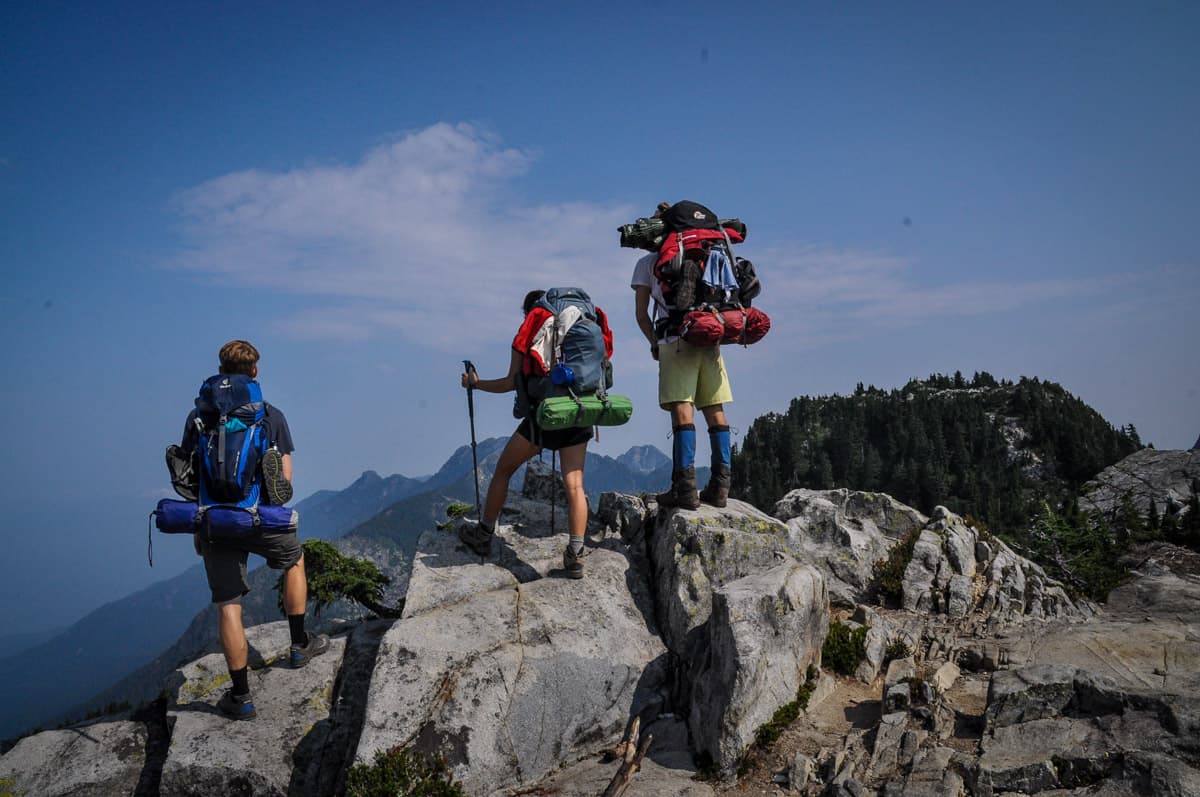
Oftentimes when backpacking in National Parks or other protected areas, you’ll need a backcountry or wilderness permit that you’ll have to arrange ahead of time.
Depending on the area, these limited permits go on sale months in advance (usually on Recreation.gov) and sell out very quickly. Typically, they also save a certain number of permits saved for first-come-first-serve. In this case, you’ll need to be at the ranger station or information center in person to try to snag a spot.
Insider Tip: In popular areas, you’ll want to get to the ranger station as early as possible. For example, in Grand Teton National Park, we got to the station 2 hours before they opened, and we were still about number 20 in line.
It’s best to do a little research beforehand on the location you would like to camp to see what the rules and regulations are around permitting.
You may have company
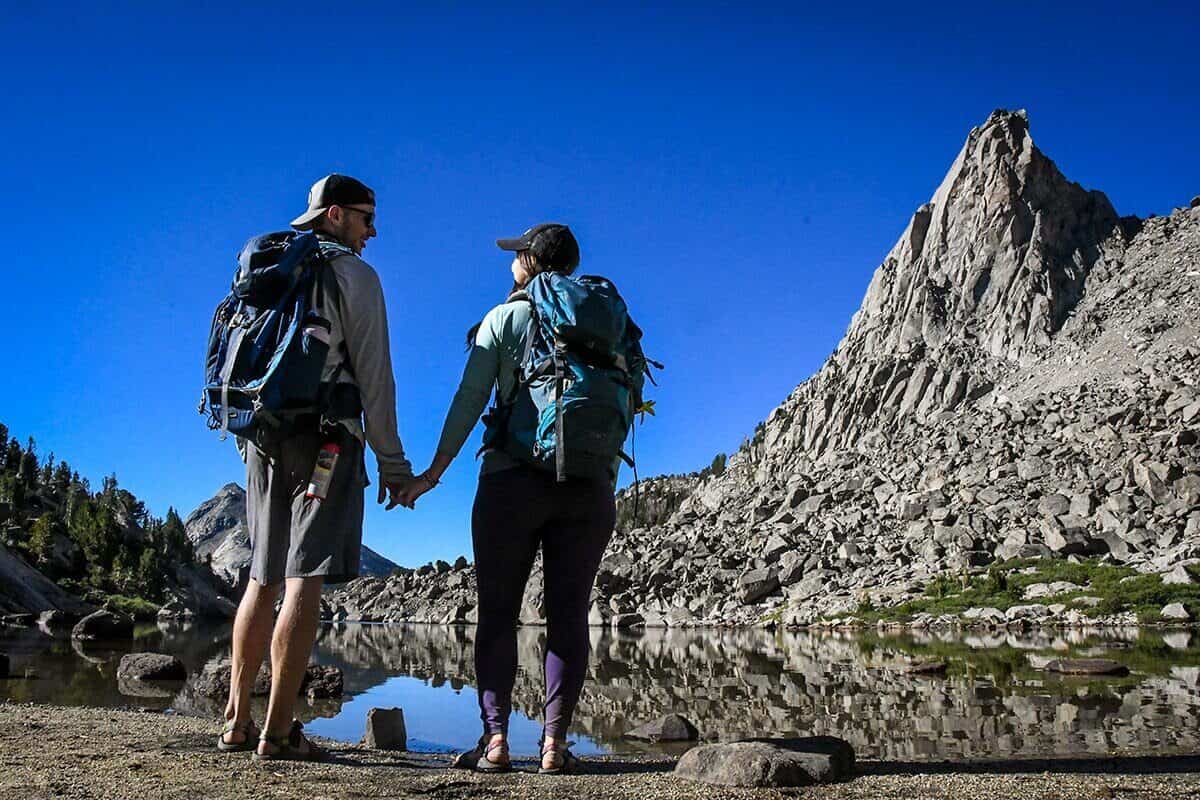
Just because you’re in the backcountry doesn’t mean you’ll be totally, 100% alone. Depending on where exactly you are backpacking, they may have multiple campsites set up relatively close to one another, in which case you’ll have neighbors. Typically, people who are camping in the wilderness tend to be respectful, and we’ve never really had any issues. (Car camping is a whole different scenario!)
In other wilderness settings, your campsite might be pretty secluded and not near anyone else. Our advice is to be open to either situation or do a little research in advance to see what to expect.
Backcountry basics
A basic understanding of the fundamentals of surviving in the wilderness will go a long way when preparing for a backpacking trip. To have a safe and comfortable experience, you’ll want to master a few skills before you hit the trails.
Water purification

Plumbing is not an amenity you can expect in the undeveloped backcountry. You’ll be responsible for your own water supply. Since water can be very heavy to carry all the water you’ll need, we’d recommend a water purification system so you can refill from a lake or river.
Why do I need to purify my water?
Even if the water in a remote lake or stream looks crystal clear, it’s still important to purify it. Nearby wildlife use the water sources, making them a very likely carrier of some nasty illnesses, like giardia. Google it if you need a graphic reminder as to why you need to take the time to sterilize your water.
How can I purify my water?
There are plenty of ways to safely purify your drinking water from UV light to pump systems to tablets and built-in filters. Some systems work better than others in certain situations.
We’ve recommended a few of our favorite water purification products in the backcountry essentials list below. But it’s also a good idea to consult with experts at your local outdoor stores (like REI) as well as with park rangers. They can be very helpful in determining which system is right for you and the location in which you’ll be camping.
Where can I fill up my water?

Before heading out on any backcountry camping trip, it’s important to understand exactly where the water fill-up points are.
If you’re camping in an area where there are no water sources, like the desert, the beach, or certain mountain terrain, you will need to make sure you have enough water packed for drinking, cooking and cleaning up. It’s probably more than you think! For this reason, we’d recommend first-time backpackers stick to locations where there are several water fill opportunities.
Off-line Navigation
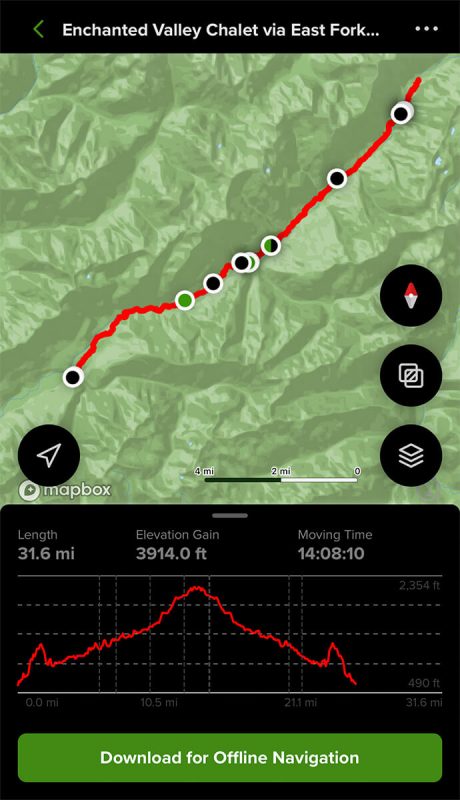
Understanding how to navigate is an important skill when going off-the-grid. It should come as no surprise that oftentimes, you will have no cell service coverage in the backcountry. And you can bet you won’t be finding any wifi hotspots!
You’ll want to be prepared for your backcountry camping trip with off-line methods of navigation such as an actual handheld paper map and compass. We also like to download the offline map of our route from AllTrails on our backpacking trips.
Important: If you plan to use digital maps (aka on your cell phone), you must carry a reliable way to keep your device charged for your entire trip. For longer backpacking trips, it’s best to stick to the good old fashioned paper map and compass so you don’t run out of battery.
Good to know: To be able to download the offline version of these maps, you must be a Pro Member of AllTrails. It is $30 annually (discounted if you opt for more than one year), and in our opinions, it is totally worth the money. We rarely pay for apps, but this is one that we will likely never go without. AllTrails has maps all over the world, so it’s great to use even when you travel internationally.
Psst! Get your first week of using Alltrails+ for FREE when you sign up using our link!
Cooking over an open fire or camp stove
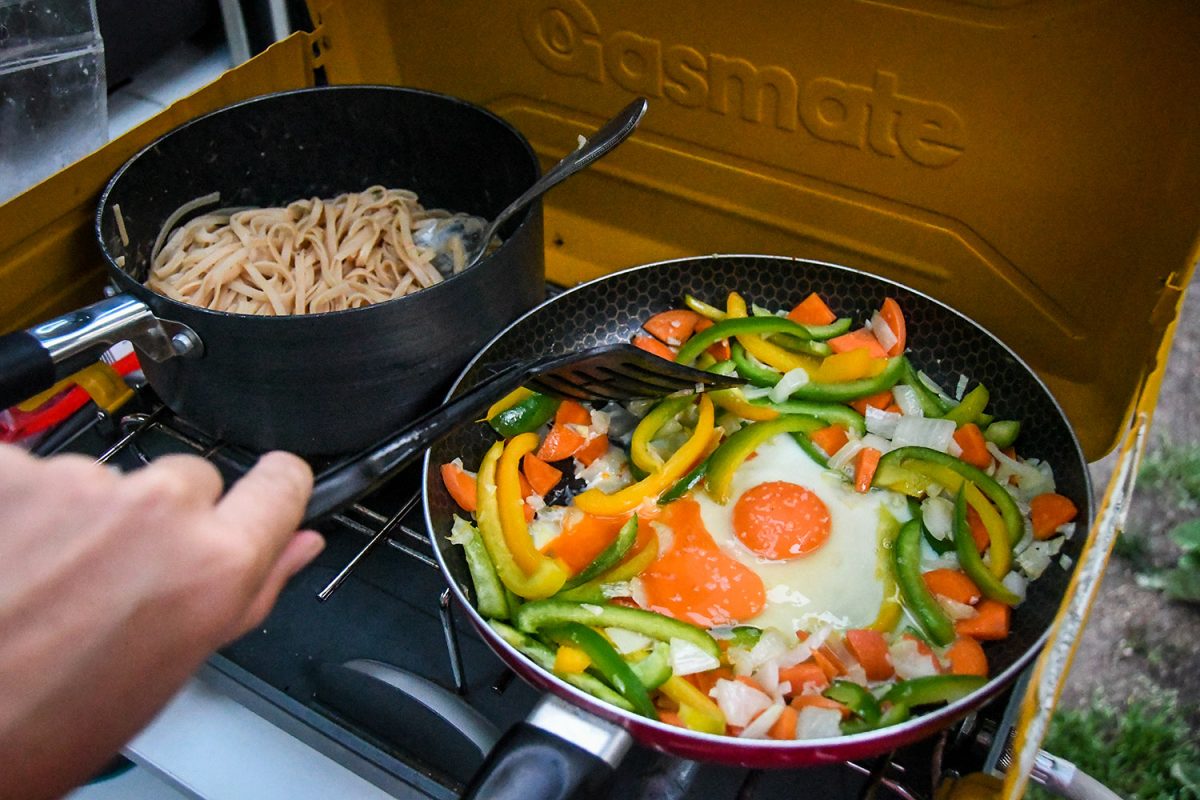
Since you have to carry in all of your own food supplies, you will need to pack lightweight backpacking meals that can be easily cooked on the trail.
We like making our own backpacking meals with dehydrated ingredients, but you can pick up a decent variety at most outdoor stores. In their simplest form, dehydrated meals can be prepared by pouring boiling water into the meal packet and letting it sit for a few minutes. This is nice because there is little clean-up involved (aka no dishes to do!).
With a little more complicated meals, you may need to actually cook the meal with water in a pot over a flame. This will result in some dishes, but may be a better option depending on the type of meal you bring.
In addition to 3 meals a day, you’ll also want to bring plenty of healthy hiking snacks for the journey as well since you’ll be using all sorts of energy to hike and set up camp.
Insider Tip: If this is your first time cooking backpacking meals, we’d recommend doing a “test run” at home just so you know how it’s done and exactly what tools to bring. You don’t want to end up in the middle of nowhere and unable to make a decent meal.
Food storage
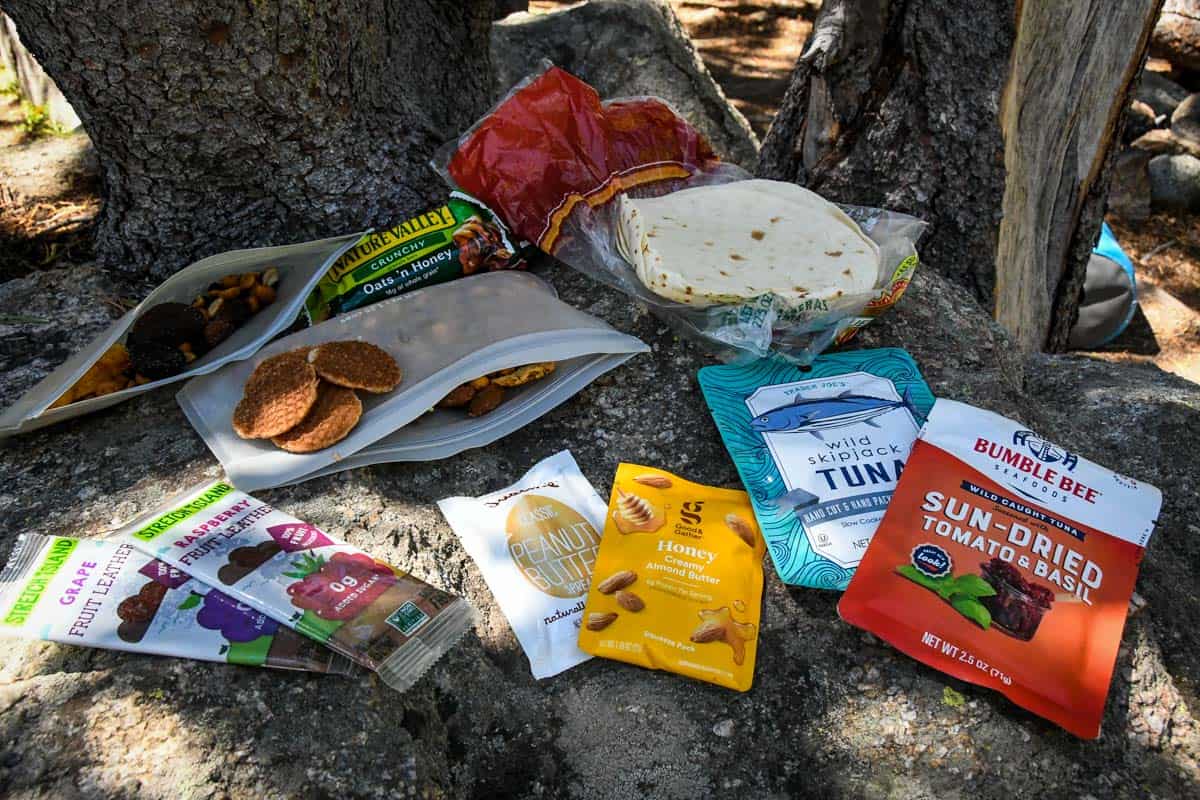
A lot of the backcountry wilderness — especially the Western part of the United States — is home to wild animals like bears that can be attracted to the scent of food (or other smelly items!).
It is incredibly important that you properly store your food and any other items that smell (like deodorant, hand sanitizer and toothpaste!) at all times.
Why do I need to store your food?
Glad you asked!
- Your safety
- The wellbeing of wildlife
- To prevent small critters from stealing your food (oh, hell no!)
Your safety
The first major reason for properly storing your food is for your own safety. In regions that are known for bears, this can mean the difference between life and death. We don’t say this to scare you, but there have been incidents of people being seriously injured (or even killed) because they haven’t properly stored their food.
When you are in the wilderness, you are the visitor, and you’re playing by the animals’ rules.
The wellbeing of wildlife

Animals have very good senses of smell and will be able to detect food from a long distance (yes, even if your chocolate bar is stuffed deep inside your backpack). This can entice them to get close to humans and to eat human food, neither of which are healthy for wildlife.
Keep them (and yourself!) safe by storing your food properly.
To prevent your food from being stolen
Obviously, it’s really scary to think about a bear approaching camp, but in reality it’s a lot more likely that your smelly food will attract smaller critters — think mice, squirrels, marmots, raccoons, etc. Trust me when I say you don’t want these guys coming into your camp and nibbling through your gear.
One more thing: If you’re camping in bear country, you’ll likely want to bring bear spray with you as well.
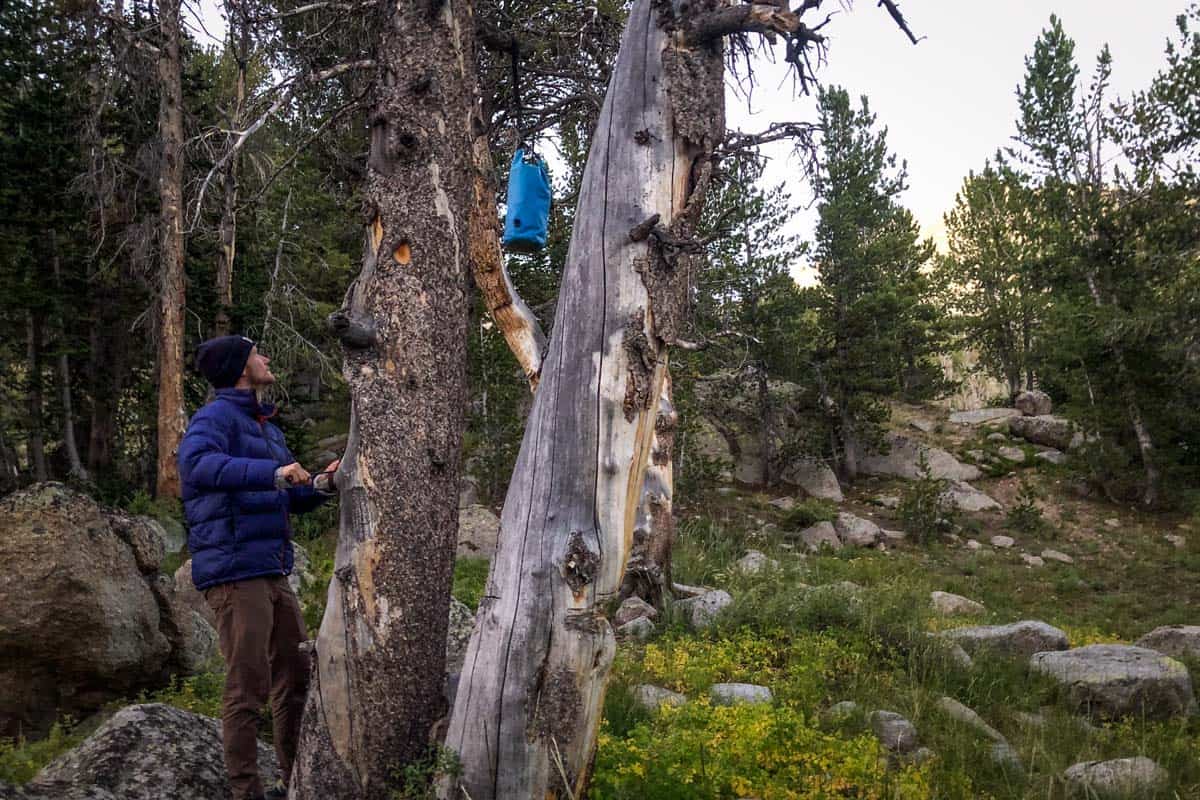
How do I know if I need to store my food?
It’s always good practice to store your food separately from your campsite. But to determine if you need a bear-safe method, check with the closest ranger station. They will have all sorts of good information for you.
How can I store my food?
There are a few different methods for safely storing your food in the backcountry.
1. Bear canister: This is a plastic container that is somewhat difficult to open (aka think of a childproof pill container). When you are storing your food and toiletries, you should put the canister at least 100 meters downwind of your tent.
Pro: Bear canisters are easy because you don’t need to be camped by a tree in order to hang your food.
Con: These can be heavy and bulky, which is something to consider especially on longer backpacking trips.
Tip: If you don’t have your own bear canister for food storage, you can usually rent one (sometimes they are even free of charge) from one of the nearby ranger stations.
2. Hanging your food pack: Another way to store your food safely is to hang it.
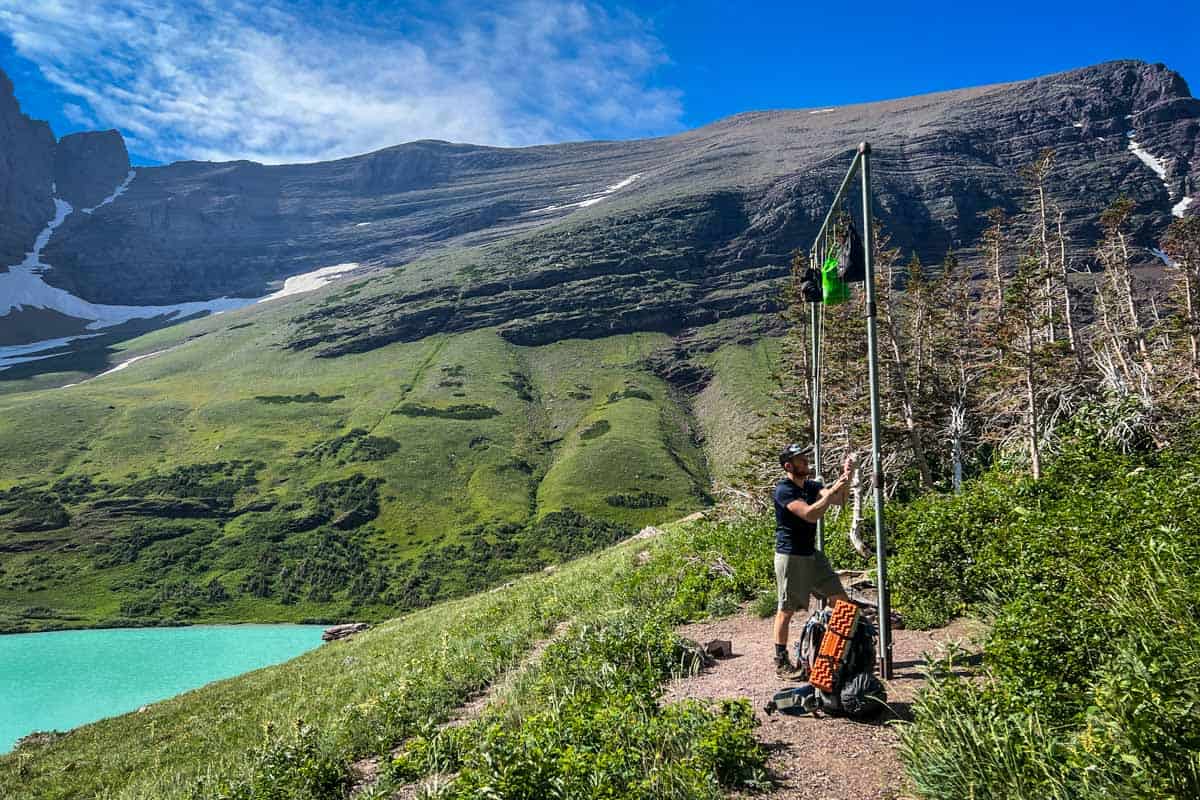
At some established backcountry sites, there will be a free standing “bear pole” or wires from which you can hang your bag. Some people will hang their entire backpack, but we prefer to carry a lightweight dry bag and just hang that.
At less established backcountry campgrounds where there isn’t a dedicated bear pole or wire, it’s still possible to hang your food pack. The tricky part is you’ll need to find a tree that works, and it can be a little more difficult that it might sound.
To actually be hung properly (where large animals cannot get to it), you’ll need to make sure that the food pack is high enough from the ground as well as far enough from the trunk of the tree. Ideally, this means the pack will hang 15 feet from the ground and 10 feet from the trunk.
For more information, check out this step-by-step guide from the Washington Trails Association.
Psst! Be sure that you have a rope if you plan on hanging your pack from a tree.
3. Food lockers: You won’t often find these at backcountry sites, but it’s another option worth mentioning.
Some campgrounds have metal storage containers for storing food inside. However, you should be prepared to follow one of the methods above as it’s unlikely your wilderness site will have a locker.
Leave No Trace principles
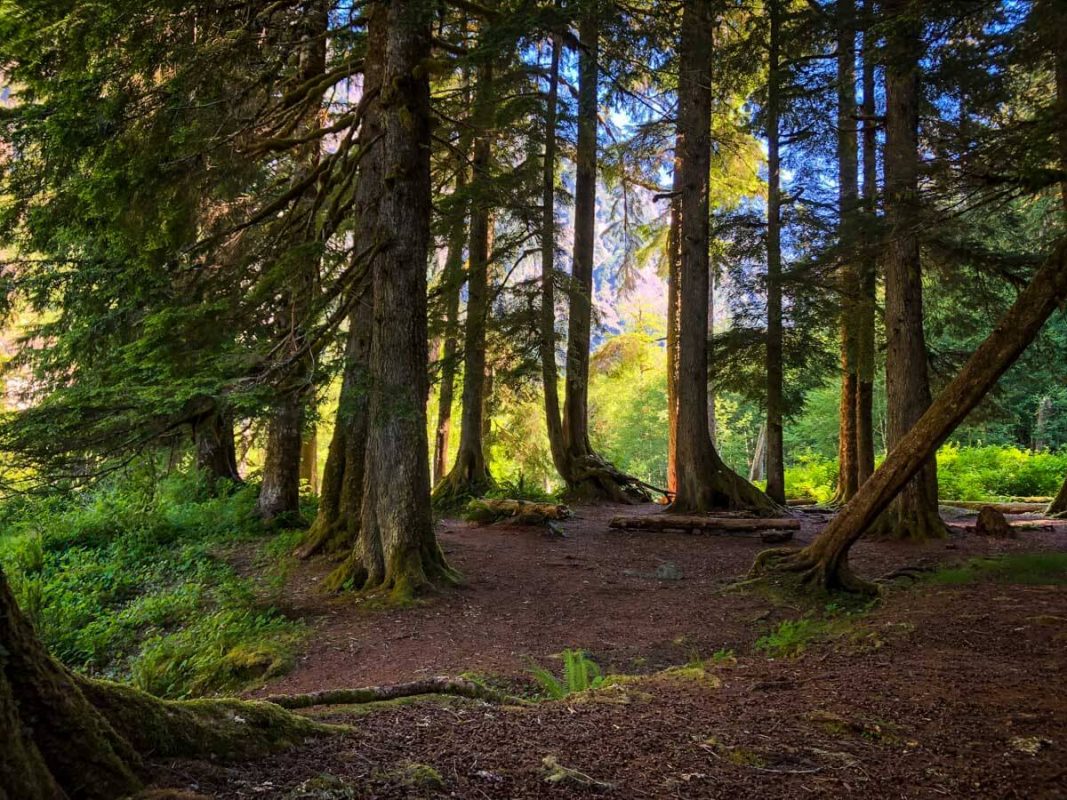
If you haven’t heard of the 7 principles of Leave No Trace, it’s important to familiarize yourself with these guidelines and follow them anytime you are in the wilderness.
The idea is that you leave any place you visit in the same condition as you found it (or better) so that you don’t impact the environment and others are able to enjoy the same experience as you.
7 Principles:
- Plan ahead and prepare
- Travel and camp on durable surfaces
- Dispose of waste properly (this generally means carry out any waste you carry in)
- Leave what you find
- Minimize campfire impacts (be careful with fire and under no circumstances should you light a fire during a fire ban)
- Respect wildlife
- Be considerate of other visitors
Weather warning signs and safety
Check the weather before your trip and get to know the weather patterns in the area. We always like to stop at the closest ranger station, as they typically have the most accurate weather forecasts for the wilderness areas nearby and can provide more information than you’ll find online.
Understand the warning signs of severe weather. Weather can change drastically while you’re in the backcountry (even if it’s not forecasted), so it’s good to be prepared with proper clothing and shelter.
Tip: It’s always a good idea to pack rain gear, even if it’s not predicted to rain. You’ll also want to have warm layers, even if it is predicted to be hot.
First aid and prevention
Consider learning some basic first aid before your backcountry trip. It’ll help you know what to do if something should happen while you’re completely disconnected from other people and even better, how to prevent accidents from happening.
Important: It’s good to understand what everything is inside your First Aid Kit. You may need to add items depending on how many people are in your party and how long your trip is.
Proper clothing
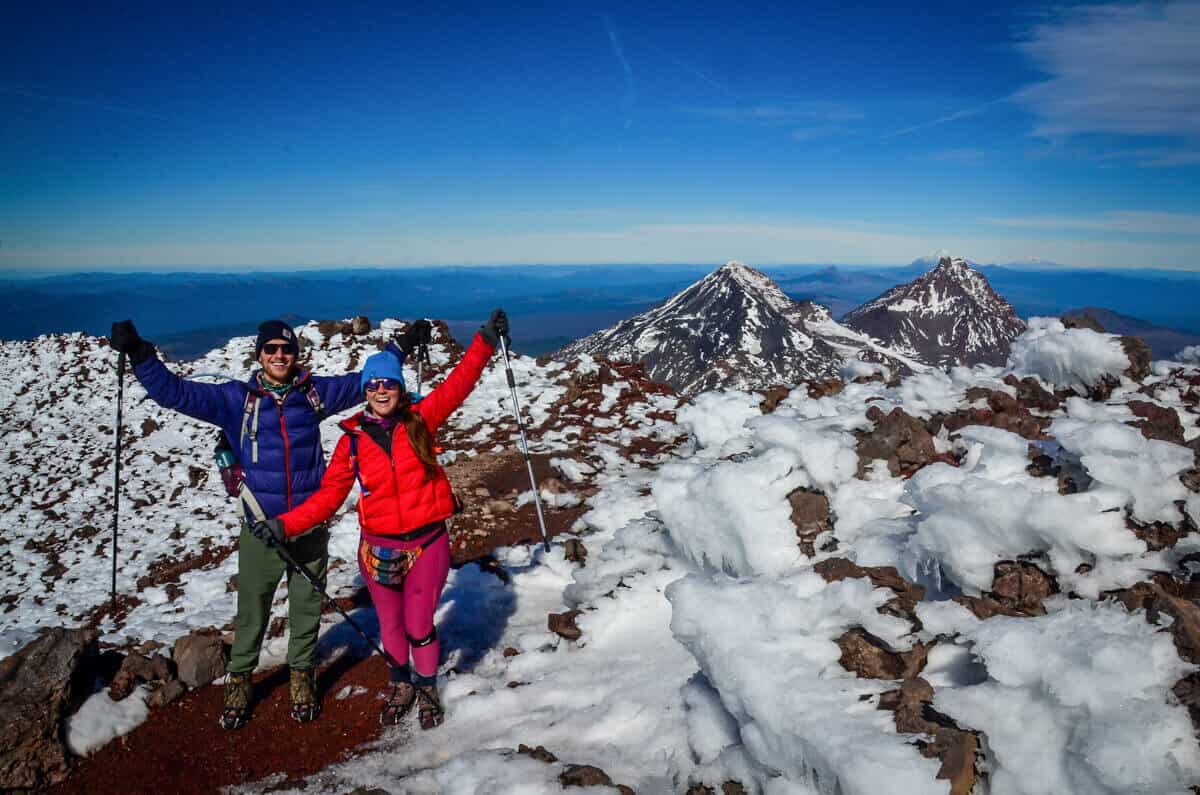
Make sure you are outfitted with proper clothing, including lots of layers while backcountry camping. It may be hot during the day while you are hiking in, but when the sun goes down the temperatures can drop drastically. Know what the climate is in the area and what to wear hiking to make sure you’re comfortable on your trip.
Shelter
This may go without saying, but you should come prepared with a proper shelter for backcountry camping. If it’s a tent, be sure you know how to set it up before you are in the woods in the middle of nowhere and the sun is setting and it’s getting darker by the minute.
If you prefer sleeping under the stars (in a hammock let’s say), be sure you are prepared for the weather and have a bug net or bug repellant if necessary.
Backcountry essentials (aka what to pack!)

It may seem like you need a ton of new gear to go backpacking, but that’s not entirely true…
There are plenty of ways to collect backpacking gear at a low cost, and in some cases even FREE! We put together a guide for how to get camping and outdoor gear for cheap to tell you exactly how.
The good news is, once you have the basics, these pieces can last you years until you’re ready to reinvest. Below is our list of items we typically take on every backpacking trip.
- *Navigation: we recommend using Alltrails+ to download the offline trail map
- Get your first week of using Alltrails+ for FREE when you sign up using our link!
- **Permit
- Decent backpacking pack that is well-fitted to suit your body type and size
- Lightweight tent (check out the best 2-person tents)
- Sleeping bag
- Sleeping pad
- Plenty of layers (here is a great resource if you’re wondering what to wear hiking)
- Rain jacket
- Hiking shoes (boots, hiking sandals or cross trainers – depending on what works best for you in the environment you choose)
- Wool hiking socks
- First Aid kit
- Bug spray (we prefer the natural stuff)
- Sun protection: sunscreen, hat, sun glasses
- Insulated water bottle(s) and/or bladder for your Camelbak
- Water purification (we love our Steripen, but find our Grayl filtered water bottles work really well on backpacking trips!)
- Dry bag (we always carry one with us for our valuables in case of rain)
- Headlamp
- Bear spray (when camping in bear country)
- Bear canister
- Rope (if you plan to hang your food bag, or for hanging sweaty/wet clothes)
- Multi-tool
- Toilet kit: toilet paper, small shovel, bag for packing out TP, hand sanitizer
- Bag for your trash
- Lighter
- Camp stove/fuel (we love our Jetboil!)
- Mess kit
- Food (see section below)
- Biodegradable soap and small towel
*If you choose to us your phone for navigation, be sure to bring a reliable battery pack to charge your phone
**Don’t forget to pack your permit! Lots of backcountry camping requires a permit and you may be asked by a ranger along the way to show proof of your reservation. Typically, you must attach this to your backpack while hiking and to the outside of your tent once you’ve set up camp.
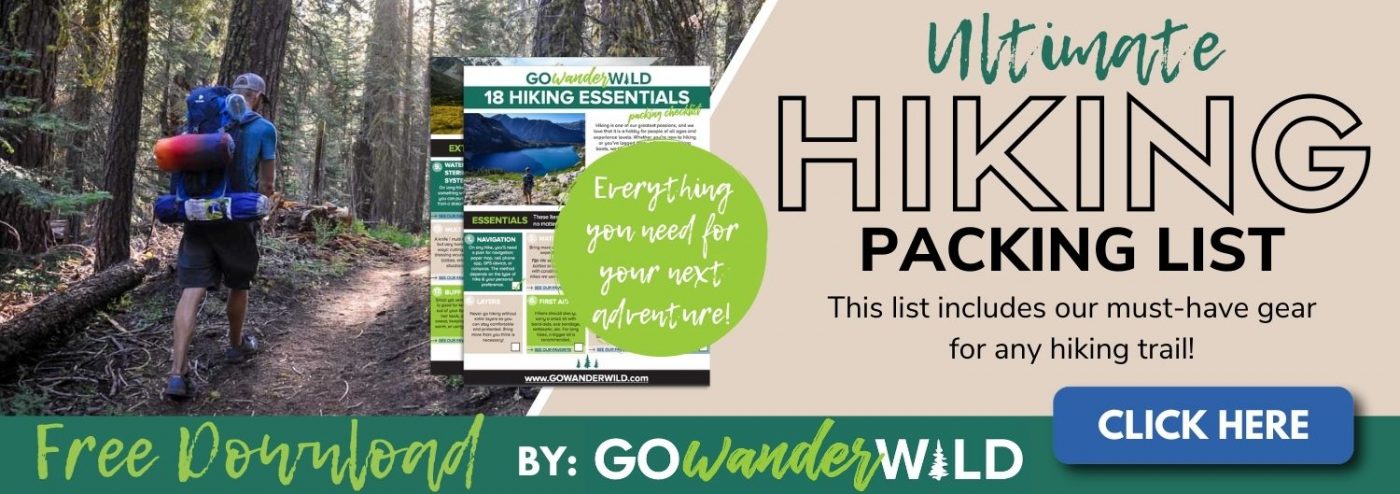
Optional gear
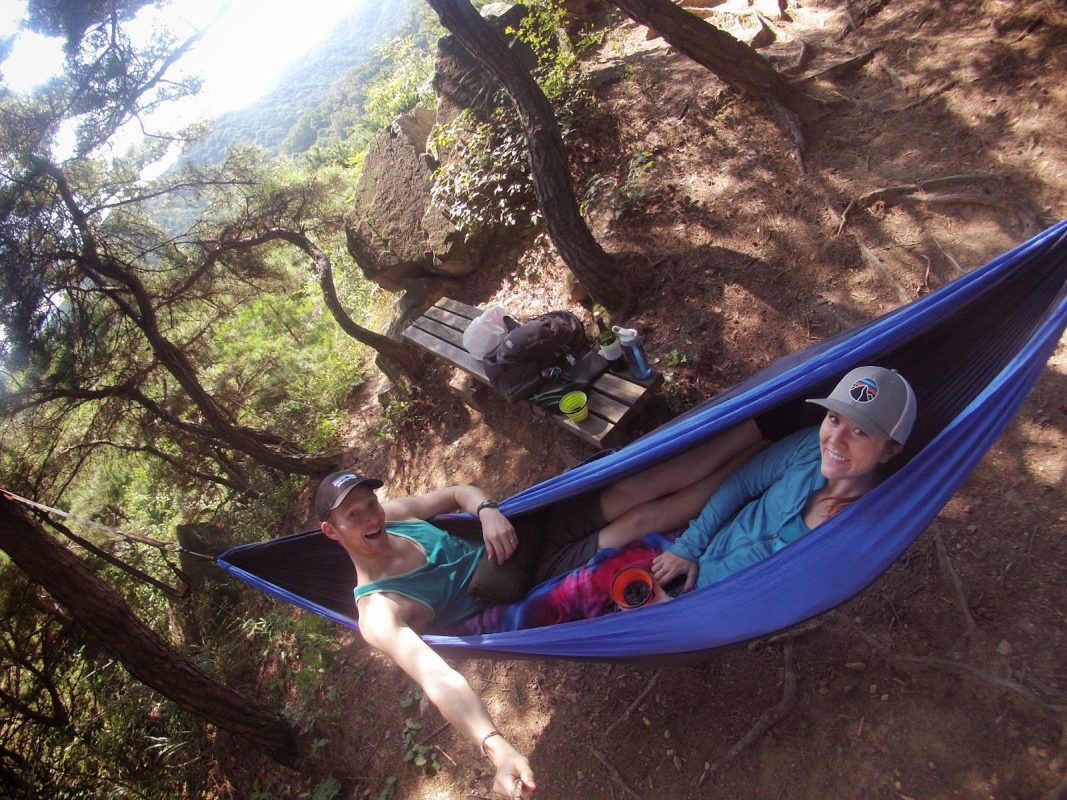
- Camp chairs (we like our Crazy Creek chairs)
- Battery pack
- Fire starter
- Fishing pole (be sure you know the regulations about fishing in the area)
- Inflatable solar lantern
- Deck of cards
- Camera and tripod (this is our favorite for hiking)
- Binoculars
- ENO hammock (we love our 2-person ENO shown above!)
- Book or Kindle
- Notebook and pen/pencil
- Hiking poles
- Shoes for at camp: We like to wear our Chacos sandals at camp as it’s nice to be able to change out of the boots we’ve been wearing all day. Some people like hiking with lightweight Crocs or flip flops for a comfy option at camp.
- Inflatable camping pillow
- Kula cloth: reusable pee cloth for women (Yep, sounds weird, but it has a cult following. I’m new to this, but am loving it so far!)
Food
- Dehydrated meals (we like making our own backpacking meals with dehydrated ingredients, but you can pick up a decent variety at most outdoor stores)
- Snacks: check out our favorite hiking snacks here!
- Tea
- Coffee: here’s how to make the best camping coffee!
Best backpacks for backpacking
- Our favorite backpacks: Osprey Renn 50 Men’s / Women’s
- Best ultralight backpack: Hyperlite Mountain Gear Southwest 40L
- Best budget backpack: REI Flash 55 Men’s / Women’s
Backpacks are highly personal and really depend on what works best for each individual’s body size and preferences. It is really important that you find a pack that is fitted for your body and adjusted to balance the weight correctly.
We’ve found the best service for this is at REI, where you can go and try on different style packs and have a customer service member help you with the adjustments.
Keep in mind how long of a backpacking trip you’re planning as well as how much and what specific items you’ll need to carry when choosing a pack.
Best tents for backpacking
- Our recommendation: Marmot Tungsten 3P Tent with Footprint
- Best ultralight backpacking tent: Big Agnes Copper Spur HV UL2
- Best budget backpacking tent: Kelty Late Start 2 Tent
Choosing a tent for backpacking will depend on how much space you want. Even though we are just 2 people, we tend to carry our 3-person tent on backpacking trips to give us a bit more space to spread out and store our gear if necessary.
If you are just one person, you may be able to save weight and space with a single, but it might also be a good idea to look into a double for comfort-sake.
We always recommend having a tent with a rain cover and footprint (or carrying a separate tarp) to protect from the elements.
Best sleeping bags for backpacking
- Our recommendation / best 3-season sleeping bag: NEMO Disco Down Sleeping Bag
- Best ultralight sleeping bag: Sea to Summit Spark Ultralight 40F Sleeping Bag
- Best budget sleeping bag (warm weather only): REDCAMP Ultra Lightweight sleeping bag
When hunting for a sleeping bag that will keep you warm and toasty in the chilly mountain air, a good rule of thumb is to look for a bag rated at least 10 degrees lower than the temperature outside during your backpacking trip.
So if you check the forecast and see overnight temperatures in the low 50s, you’ll want a sleeping bag rated at 40°F or lower.
Aside from temperature ratings, the other feature that makes a massive difference is what your sleeping bag is filled with. Synthetic filling is common, but goose down is preferred by a lot of camping enthusiasts because it keeps you warmer in cold weather due to the sleeping bag’s warmth-to-weight ratio.
Just remember that if a down sleeping bag gets wet, it loses a lot of its insulation abilities, so be sure to keep it dry and bring a waterproof stuff sack to pack it into.
Best sleeping pads for backpacking
- Our recommendation: Sea to Summit Ultralight Insulated Air Sleeping Pad
- Best insulated sleeping pad: NEMO Tensor Alpine Air Pad
- Best budget sleeping pad: POWERLIX Ultralight Sleeping Pad
A good sleeping bag is an essential for us, but the other element for a solid sleep set up is a quality sleeping pad.
Out of all the gear you’ll need for backpacking, a sleeping pad is going to make the biggest difference in overnight comfort.
Tip: R-value is the measurement of insulation for sleeping pads and they range from 1.0-8.0. When shopping for sleeping pads, you’ll want to find something with a value of 4.0+ if you plan to hike in cooler weather conditions, since those are rated for all-season and winter use.

You may also like…
- How to Get Outdoor & Camping Gear for Cheap
- Backpacking Meals: Guide to Meal Planning on the Trail
- Best 2-Person Tents for Camping & Backpacking
- Hiking the Enchantments: A Trail Guide
Save this article on Pinterest for later!
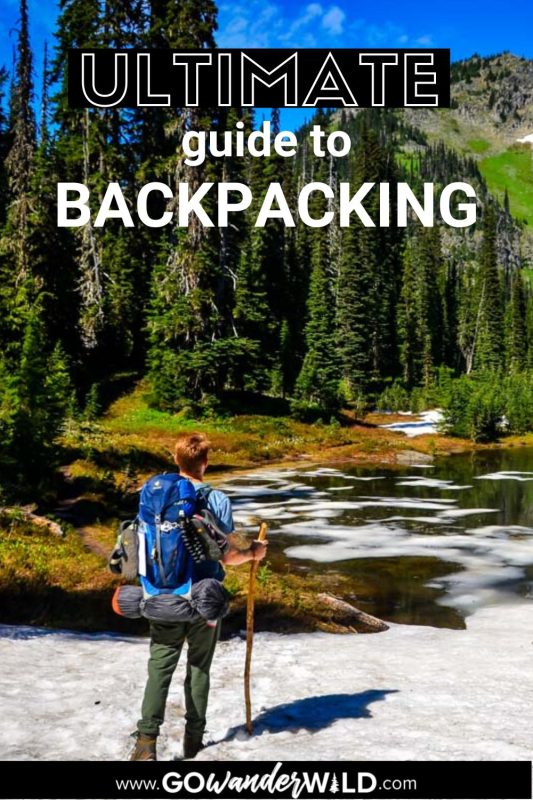
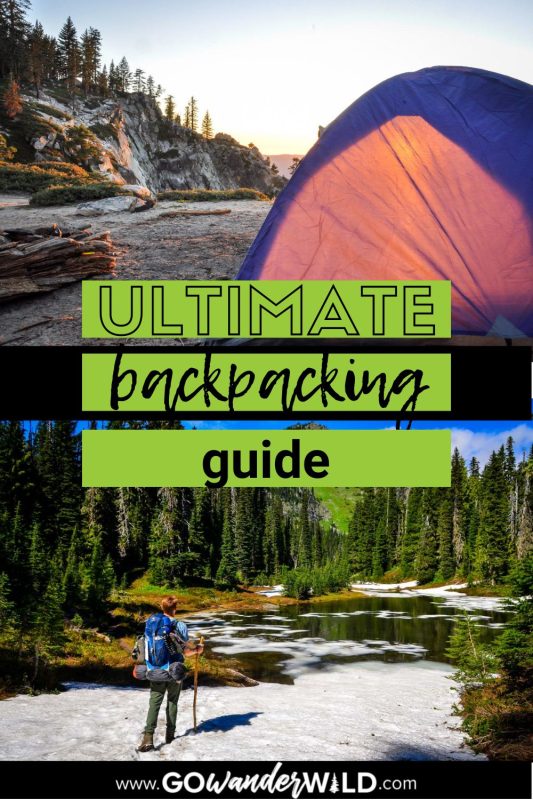
We want to hear from you!
Comment below if you have any more questions about backpacking and backcountry camping, and we’ll do our best to get back to you!


